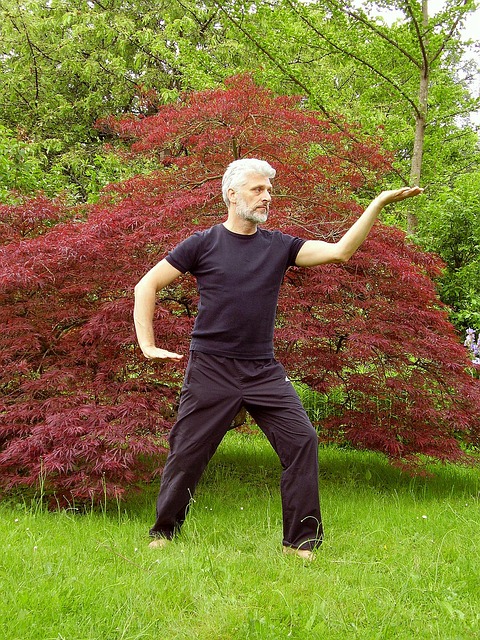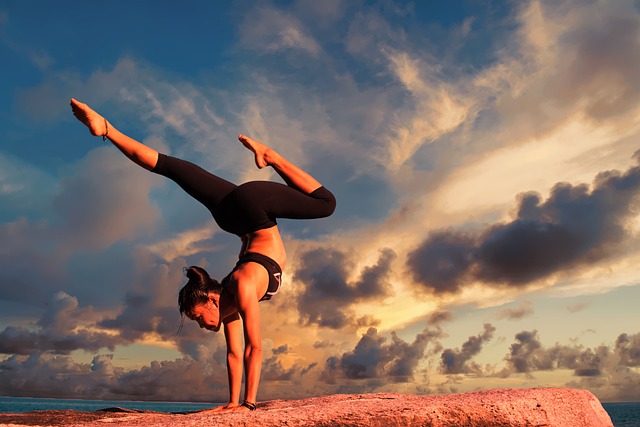
The mind and body are connected in mysterious ways. It is our duty to care for both equally, yet often we disregard one or the other. It’s time to focus on the beauty of both and embrace the holistic approach for our overall health. Mind & body practices offer profound benefits that can help improve your overall well-being. By incorporating them into your daily routine, you can create a strong foundation for a healthier and happier life.
Mindfulness and Its Benefits
Mindfulness is a practice that allows us to become fully aware of the present moment, without judgment or attachment. It is a state of mind that can be cultivated through various techniques, such as deep breathing exercises, body scans, and focused attention. By anchoring our awareness in the present, we can heighten our ability to observe our thoughts and emotions without getting entangled in them.
One of the key benefits of mindfulness is its ability to reduce stress and promote emotional well-being. As we become more attuned to our thoughts and emotions, we gain the capacity to respond to them rather than react impulsively. This creates a space for self-reflection and empowers us to make conscious choices, improving our overall mental health.
In addition to reducing stress, mindfulness also enhances our emotional intelligence. By developing an open and non-judgmental attitude towards our thoughts and feelings, we become more empathetic towards others. This heightened empathy allows for better communication, effective problem-solving, and nurturing of healthy relationships.
The Art of Meditation
Meditation is a practice that allows us to quiet the mind, finding stillness and inner peace amidst the chaos of daily life. By focusing our attention on the breath or a specific object, we can train our mind to let go of distractions and enter a state of calmness. Through consistent meditation, we develop the ability to detach from the incessant chatter of the mind and cultivate a deep sense of tranquility.

In today’s fast-paced world, stress has become a constant companion for many. Meditation offers a powerful tool to transform stress into resilience. By observing our thoughts and emotions during meditation, we gain insight into their transient nature. This understanding helps us detach from stressful situations and respond to them with clarity, developing resilience to face life’s challenges.
Meditation aids in the development of self-compassion, allowing us to treat ourselves with kindness and understanding. By observing our thoughts without judgment, we learn to let go of self-criticism and cultivate a sense of self-love and acceptance. This practice extends beyond meditation sessions, influencing our daily lives as we become more attentive and compassionate towards ourselves and others.
Yoga and Tai Chi
In addition to mindfulness and meditation, mind & body practices like yoga and tai chi have gained popularity for their powerful impact on overall well-being. These ancient disciplines offer a unique blend of physical exercise, mental focus, and spiritual connection, harmonizing the mind and body in profound ways.
Yoga: A Path to Balance and Strength
Yoga, originating in ancient India, has become a global phenomenon renowned for its transformative effects on the mind and body. Through a series of postures, breathing exercises, and meditation, yoga cultivates a sense of balance and strength, both physically and mentally.
Practicing yoga regularly can increase flexibility, improve muscle tone, and enhance overall fitness. The various postures, or asanas, work on different parts of the body, promoting strength, stability, and alignment. Whether it’s the warrior poses, downward-facing dog, or the invigorating sun salutations, each posture engages muscles and cultivates a deeper connection to the physical self.
As a mind & body practice, yoga focuses not only on physical fitness but also on mental well-being. Through controlled breathing and mindful movement, yoga helps to calm the mind, reduce stress, and improve concentration. As practitioners flow through each pose, they develop a sense of present-moment awareness, fostering a meditative state that brings clarity and peace.
Yoga also offers a path to spiritual connection and self-discovery. The practice encourages introspection and self-reflection, allowing individuals to explore their inner landscape and develop a deeper understanding of themselves. By incorporating intention-setting and affirmations during yoga sessions, practitioners can align their actions with their values and cultivate a sense of purpose.
Tai Chi: The Flowing Harmony of Mind and Body
Originating in ancient China, tai chi is a mind & body practice that combines graceful, flowing movements with deep diaphragmatic breathing. Known as “meditation in motion,” tai chi promotes physical and mental well-being through its gentle, continuous movements.
The slow, deliberate movements of tai chi gently work the entire body, improving balance, flexibility, and coordination. The practice focuses on proper body alignment and weight distribution, which can enhance posture and prevent falls in older adults. Regular practice of tai chi can also help strengthen muscles and improve cardiovascular health.
Tai chi is often described as a moving meditation, as it cultivates a calm and focused mind. The slow and fluid movements require concentration and mindfulness, allowing practitioners to let go of distractions and enter a state of deep relaxation. This practice can reduce anxiety, enhance mental clarity, and improve overall cognitive function.
Tai chi not only promotes harmony between the mind and body but also aims to cultivate the flow of energy or “qi” within the body. Practitioners believe that by harmonizing the flow of energy, they can improve overall vitality and promote wellness. The gentle movements of tai chi, combined with focused breathing, facilitate the smooth circulation of energy, promoting a sense of balance and harmony.
Guided Imagery and Visualization
In the realm of mind and body practices, guided imagery and visualization stand as powerful tools to tap into the limitless capabilities of the human imagination. These practices invite us to embark on inner journeys that can have a profound impact on our mental, emotional, and even physical well-being.
Guided imagery involves the use of soothing narration or audio recordings to direct our thoughts and sensations towards a specific mental image or imagined experience. By engaging our senses and the power of visualization, we can create a vivid and detailed inner landscape. This visualization can be serene, such as picturing ourselves in a lush forest or standing on a tranquil beach. Alternatively, it can be transformative in envisioning ourselves achieving our goals, conquering fears, or embracing self-confidence.

During guided imagery sessions, individuals are guided to enter a deep state of relaxation, allowing their minds to become receptive and open to the experience. With focused attention and intention, the mind starts to weave a tapestry of images, emotions, and sensations, bringing the imagined scenario to life. This process taps into the mind-body connection, as the brain registers these imagined experiences as real, triggering corresponding physiological responses.
The Role of Nutrition and Diet
Nutrition plays a crucial role in supporting the mind and body practices we engage in. Just as we nourish our bodies with physical exercise, it is essential to fuel ourselves with a well-balanced diet to maximize the benefits of these practices. A healthy diet not only provides the necessary nutrients for physical health but also impacts our mental well-being.
- Fueling the Mind & Body:
Mind & body practices require energy, focus, and endurance. To maintain optimal performance during these activities, it is important to provide our bodies with the right fuel. A diet rich in whole grains, fruits, vegetables, lean proteins, and healthy fats provides the essential nutrients needed for sustained energy levels and mental clarity.
- Hydration for Vitality:
Proper hydration is key to supporting mind & body practices. Water is essential for maintaining the body’s natural balance and promoting overall health and well-being. Dehydration can lead to fatigue, decreased cognitive function, and hinder performance during mind & body practices. It is important to hydrate before, during, and after engaging in these activities to stay energized and focused.
- Supporting Cognitive Function:
Certain nutrients play a vital role in supporting cognitive function and mental clarity. Omega-3 fatty acids, found in fatty fish, walnuts, and flaxseeds, have been linked to improved brain health and reduced cognitive decline. Antioxidant-rich foods, such as berries, leafy greens, and dark chocolate, can help protect against oxidative stress and promote brain health.
- Balancing Mood & Emotions:
The foods we eat can influence our mood and emotions. Nutrient deficiencies, such as deficiencies in B vitamins, vitamin D, and magnesium, have been associated with increased risk of mood disorders like depression and anxiety. Incorporating foods rich in these nutrients, such as leafy greens, nuts, seeds, and fatty fish, can help support emotional well-being and reduce the risk of mood disturbances.
- Gut-Brain Connection:
The gut-brain connection highlights the intricate relationship between our digestive system and mental health. A healthy gut microbiome is essential for proper nutrient absorption, immune function, and brain health. Consuming a diet rich in fiber, fermented foods (like yogurt and sauerkraut), and prebiotic foods (like onions, garlic, and bananas) can support a healthy gut, which in turn can positively impact mental well-being.
- Mindful Eating:

Mindfulness extends beyond mind & body practices and applies to our approach to food. Mindful eating involves being fully present and aware while consuming food, paying attention to hunger and fullness cues, and savoring every bite. By practicing mindful eating, we develop a deeper connection to our bodies, allowing us to make conscious and nourishing food choices.
Safety and Precautions
When engaging in mind & body practices, it is important to prioritize safety and take necessary precautions to ensure a positive and beneficial experience. Whether you are practicing mindfulness, meditation, yoga, tai chi, or guided imagery, keeping these considerations in mind will help protect your well-being and enhance your practice.
1. Start Slow and Listen to Your Body: Mind & body practices are meant to be gradual and gentle processes. Respect your body’s limits and start with beginner-level classes or guided sessions. It is essential to listen to your body and not push beyond what feels comfortable or causes pain. Progress at your own pace and gradually increase the intensity or duration of your practice over time.
2. Seek Guidance from Qualified Instructors or Practitioners: To ensure proper technique and reduce the risk of injury, it is advisable to seek guidance from qualified instructors or practitioners. They can offer expertise, provide modifications, and guide you through the practice safely. Look for certified instructors in your chosen discipline who have ample experience and knowledge to support your journey.

3. Warm-Up and Cool Down: Prior to engaging in any mind & body practice, warm up your body with gentle movements and stretches. This helps prepare your muscles, joints, and mind for the practice ahead. Similarly, after completing your practice, cool down with calming stretches or relaxation techniques to bring your body and mind back to a resting state.
4. Use Proper Equipment and Props: Depending on the practice, it may be necessary to use equipment or props to support proper alignment and prevent injury. For example, in yoga, a yoga mat provides stability and cushioning, while yoga blocks and straps assist in achieving correct postures. Invest in quality equipment and props that suit your needs and ensure their proper usage during your practice.
5. Stay Hydrated and Rest as Needed: Maintaining hydration is crucial during mind & body practices. Drink water before, during, and after your session to replenish fluids lost through sweat and to support optimal bodily functions. Additionally, be mindful of your body’s signals and rest when needed. As you evolve in your practice, you will gradually build strength and endurance, but it’s important to honor rest and recovery periods to prevent burnout and injury.
6. Modify and Adapt as Necessary: Each person’s body is unique, and what may work for one individual may not work for another. It is essential to modify and adapt mind & body practices to suit your specific needs and limitations. Do not hesitate to make adjustments or seek modifications from your instructor to ensure a safe and comfortable experience.
7. Consult a Healthcare Professional: If you have any pre-existing medical conditions, injuries, or concerns about your ability to participate in mind & body practices, it is advisable to consult a healthcare professional before starting. They can provide personalized guidance, take into account your medical history, and offer insights on how to adapt the practices to your specific needs.
Remember, mind & body practices are intended to enhance your overall well-being. By incorporating these safety precautions into your routine, you can create a safe and nurturing environment that encourages personal growth and holistic health. Listen to your body, be mindful of your limits, and enjoy the profound benefits that mind & body practices can bring to your life.
